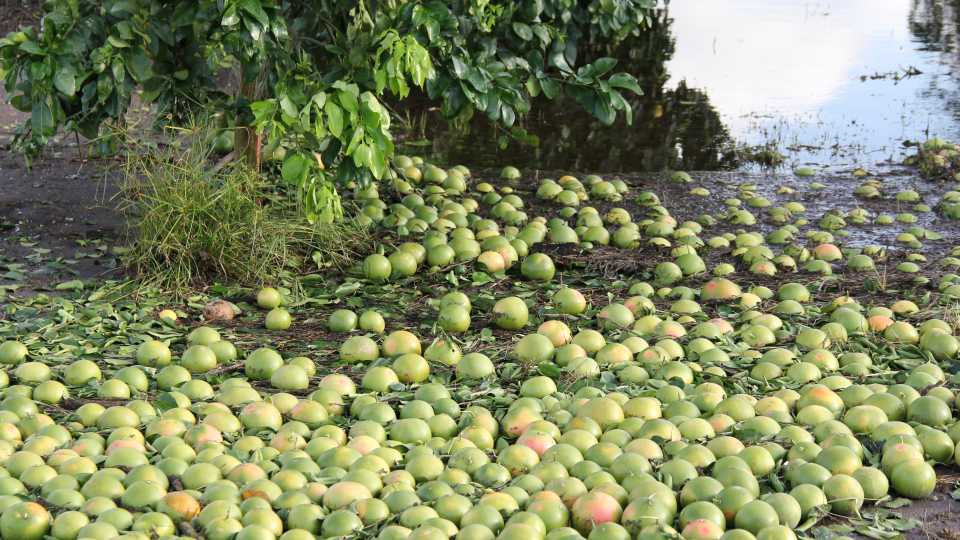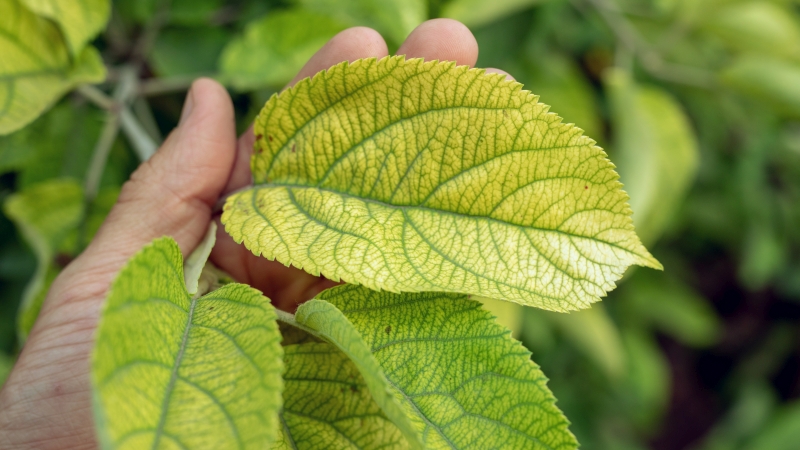USDA Set to Whip up $2.36 Billion in Natural Disaster Aid

In one fell swoop, Hurricane Irma cut this season’s Florida citrus crop down to size. Ever since, growers and industry stakeholders have been waiting patiently for disaster assistance. Implementation of USDA’s new Wildfires and Hurricanes Indemnity Program should bring much-needed relief. Photo by Monica Ozores-Hampton
Mother Nature went on a rampage during 2017. In total, the U.S. was impacted by 16 separate billion-dollar disaster events including: three major hurricanes, eight severe storm events, two inland floods, a crop freeze, drought, and major wildfire. More than 25 million people were affected by major disasters. Taking that all into account, U.S. Secretary of Agriculture Sonny Perdue has announced USDA will make disaster payments of up to $2.36 billion to help America’s farmers and ranchers recover from this past year’s plunder. The funds are available as part of the new 2017 Wildfires and Hurricanes Indemnity Program (2017 WHIP). The announcement comes nearly two months after members of the U.S. House and Senate approved an agriculture disaster relief package as part of the massive federal budget deal.
Sign-up for the new program authorized by the Bipartisan Budget Act of 2018 will begin no later than July 16. USDA’s Farm Service Agency (FSA) will make these disaster payments to agricultural producers to offset losses from hurricanes Harvey, Irma, and Maria as well as the devastating wildfires in California.
In response to the announcement from USDA, Adam Putnam, Florida’s Commissioner of Agriculture, stated: “Florida agriculture took a direct hit from Hurricane Irma and has long-awaited this much-needed disaster relief. We look forward to continuing to work with the USDA to ensure that this program is implemented quickly and in the best way possible to help Florida’s producers recover from the devastating hurricane.”
The aid can’t come soon enough for those still struggling to recover from last storm season. Just last week, two long-range Atlantic hurricane season forecasts were issued. Early predictions are calling for “above-normal activity.”
What’s up With WHIP?
The 2017 Wildfires and Hurricanes Indemnity Program will provide significant disaster assistance and be guided by the following principles:
- Eligibility will be limited to producers in counties that experienced hurricanes or wildfires designated as Presidentially-declared disasters in 2017;
- Compensation determined by a producer’s individual losses rather than an average of losses for a particular area (where data is available);
- Producers who purchased higher levels of risk protection, such as crop insurance and non-insured crop disaster assistance program, will receive higher payments;
- Advance payments up to 50%; and
- A requirement that payment recipients obtain future risk protection.
WHIP disaster payments are being issued in addition to payments through our traditional programs, some of which obtained increased funding or had amendments made by the Act to make the programs more responsive, including the Emergency Conservation Program, Emergency Watershed Protection Program, Emergency Assistance for Livestock, Honeybees and Farm-raised Fish Program, Tree Assistance Program, and Livestock Indemnity Program.
FSA will distribute more information on how producers can file claims for WHIP disaster payments at a later date. For questions on how to establish farm records to be prepared when WHIP disaster signup begins, or to learn about other disaster assistance programs, producers are asked to contact their local USDA service center.









